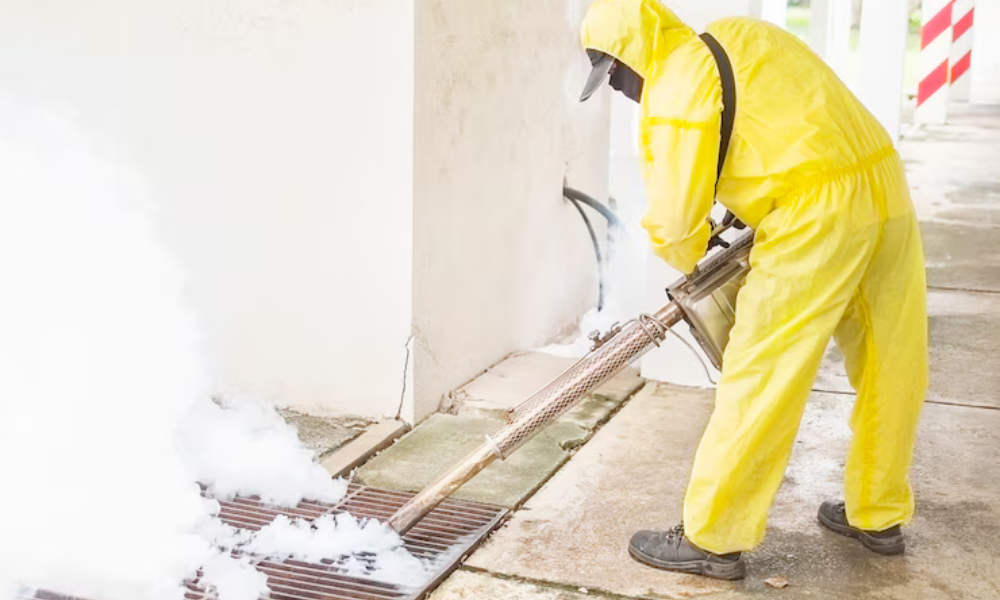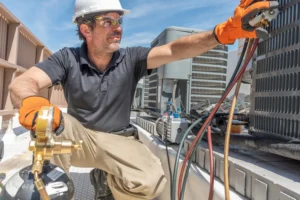Beyond the Surface: Deep Cleaning Tips for a Healthier workspace
We all want our workspaces to look clean. But what about the stuff you can’t see? Dust mites in the...

We all want our workspaces to look clean. But what about the stuff you can’t see? Dust mites in the air vents. Germs on keyboards. That old sandwich smell lingering in the breakroom fridge. Yeah, that’s not doing your health (or productivity) any favors. If you’re working in New York, where the pace is fast and the stakes are high, keeping your office spotless isn’t just about appearances—it’s about wellness.
In this guide, we’re diving deeper than the visible grime. We’ll explore tips, truths, and tried-and-true methods for a healthier, cleaner, and more productive workspace.
Why Deep Cleaning Deserves Your Attention
Sure, regular cleaning handles the basics. Trash out. Desks wiped. Floors mopped. But deep cleaning? That’s another level. It targets the hidden culprits that build up over time:
- Dust trapped behind furniture and inside air ducts
- Bacteria thriving on shared electronics
- Allergens embedded in carpets and upholstery
- Mold colonies quietly growing in damp corners
According to a study by the American Journal of Infection Control, workplaces with scheduled deep cleaning saw a 30% reduction in employee sick days. That’s not just cleaner—it’s cost-effective.
In a city like NYC, where office density is high and ventilation can be tricky, ignoring deep cleaning is a risky move.
Looking Up: Don’t Forget Your Chimneys and Vents

Here’s one most people miss: chimneys and exhaust vents. Especially in older buildings across Manhattan and Brooklyn, these can be breeding grounds for debris, dust, and even pests.
Knowing the current chimney cleaning rates in New York can help businesses budget wisely while protecting employee health. On average, rates range from $150 to $300 per service, depending on the building’s size and the complexity of the ductwork.
And while some might see this as a maintenance task, it’s truly a health measure. Clogged vents can recirculate contaminants, contributing to allergies and respiratory issues. Keeping them clean ensures better airflow, which equals better air quality.
Touchpoints and Trouble Spots: Where Germs Love to Hide
You’d be surprised how many germs are living rent-free in your workspace. Here are the biggest trouble zones:
- Shared keyboards and computer mice
- Door handles and light switches
- Microwave and fridge handles
- Office phones and printer buttons
Using EPA-approved disinfectants is key here. Don’t just wipe—sanitize. And don’t forget frequency. A one-time wipe-down doesn’t do much. Implement a weekly rotation and a monthly deep clean for high-touch surfaces.
Furniture, Floors, and Filters: The Three Fs of Deep Cleaning
Let’s talk strategy. A solid deep-cleaning plan should always include what we call the Three Fs:
1. Furniture Care
Vacuum and steam clean chairs, sofas, and conference room seating. Over time, these collect allergens, body oils, and food particles. Fabric-safe disinfectants work wonders.
2. Flooring Focus
Hardwood, carpet, vinyl—each has its own cleaning demands. Consider:
- Using commercial-grade vacuums with HEPA filters
- Steam cleaning carpets twice a year
- Stripping and resealing floors as needed
3. Filter Replacement
HVAC filters need swapping out every 2–3 months. Dirty filters spread contaminants instead of catching them. Pro tip: schedule reminders to avoid forgetting.
Real Talk: What NYC Businesses Are Doing Right
Many New York offices are stepping up their cleaning game post-pandemic. Take this example: a shared office space in Midtown partnered with a local deep-cleaning company for monthly disinfectant fogging and quarterly upholstery cleaning. Result? Fewer sick days and happier employees.
Even tech startups in Brooklyn are investing in air purification systems and monthly carpet cleaning. It’s about showing your team you care.
When to Bring in the Pros
DIY is fine for day-to-day messes. But for mold, dust mites, and hard-to-reach places? You’ll need the pros.
Professional cleaners bring industrial-strength tools, expert knowledge, and peace of mind. They know where to look, what to clean, and how to do it safely.
If you’re running a business in NYC, local cleaning services understand city-specific challenges. Whether it’s old buildings with outdated systems or tight office layouts—they’ve seen it all.
Black Mold Isn’t Just Gross—It’s Dangerous

Let’s not tiptoe around this. Black mold is no joke. It’s toxic. It’s sneaky. And it thrives in NYC’s old, damp basements and poorly ventilated corners.
That’s where professional black mold clean up services come into play. They’re trained to identify, contain, and eliminate mold without spreading spores. The NYC Department of Health even has strict guidelines about mold removal in commercial buildings.
Local services like Mold Inspection & Removal NYC offer rapid response and EPA-certified treatments—essential for high-risk areas.
Practical Tips to Keep the Office Clean Every Day
While deep cleaning is critical, maintaining cleanliness between those sessions matters too. Here’s how:
- Keep disinfecting wipes near shared devices
- Assign weekly cleaning roles to team members
- Encourage “clean desk” policies
- Schedule monthly maintenance checklists
A little daily effort saves a lot of scrubbing later.
Final Thoughts: Clean Workspace, Clear Mind
Deep cleaning isn’t glamorous, but it’s necessary. Especially in a fast-paced city like New York, where health, hygiene, and hustle all go hand in hand.
So go beyond the surface. Invest in your workspace. Your lungs—and your team—will thank you.
Stay sharp. Stay safe. Stay spotless.





